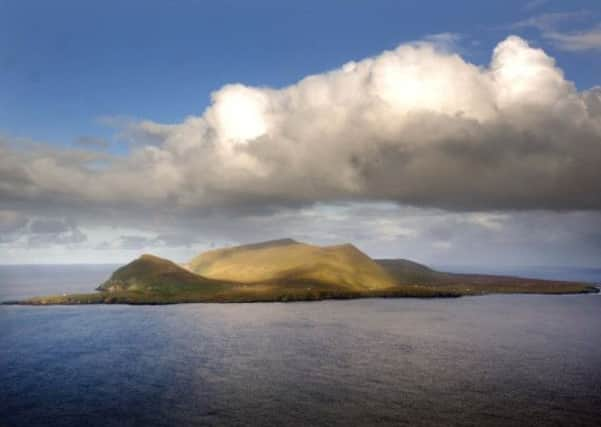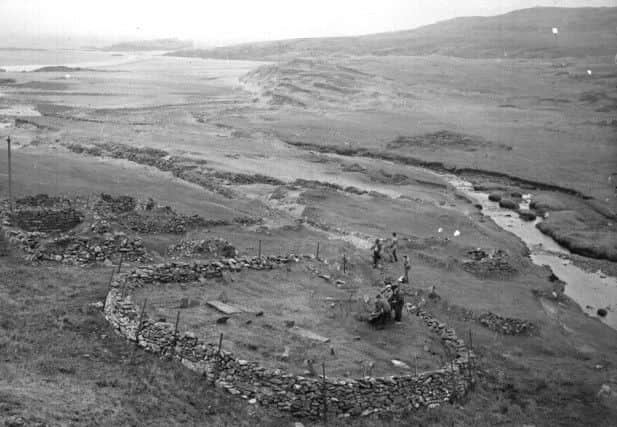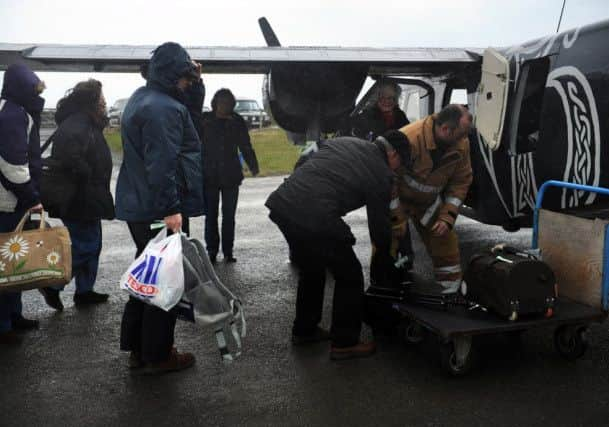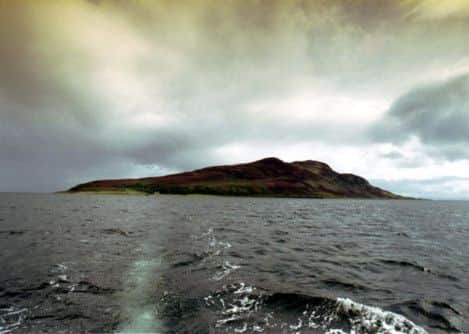A snapshot of life on five of Scotland's remotest islands


Island life has an unparalleled living experience with strong communities, stunning landscapes and sense of self reliance.
And while they might not be for everyone the isles have consistently been hailed as some of the best places to live in the UK.


Advertisement
Hide AdAdvertisement
Hide AdFor the truly hardy a handful of Scotland’s 790 islands offer a genuine escape from the hustle and bustle of modern life.
What is life like for those living in these secluded communities?
FOULA
This is the most remote inhabited island in the British Isles, lying 20 miles to the west of the Shetland Islands.


The island boasts dramatic scenery and abundant wildlife.
Inhabited since Neolithic times, Foula is rich in historical significance.
Populated by just over 30 people, it has one school - with one pupil, although the roll is set to rise - and the ferry and air services are very much dependent on the weather.
Community councillor Jim Gear, who previously represented the island as a councillor on the local authority, said such a small community means most people work more than two to three jobs each day.


He added: “I am a crofter and a community councillor, others work as fishermen, teacher, ferrymen, shop staff, postal workers, and so on.
“We are a small island with very high cliffs, meaning we are the first to get battered by storms coming across the Atlantic.
Advertisement
Hide AdAdvertisement
Hide Ad“The last big storm saw roofs blown off houses and barns, as well as the hydro station. Because work is being done on that we are back to operating on generators and solar panels.”


Owned since the turn of the 20th century by the Holbourn family, the island was the location for the film The Edge of the World.
The residents still celebrate Christmas and New Year according to the old Gregorian calendar, falling on 6 and 13 January respectively.
Foula, which lies on the same latitude as Saint Petersburg, has five peaks, rising to 418m (1371 feet) at the Sneug and 376m (1220 feet) at the Kame.
As well as sheep farming, the island also makes an income from tourism.
HOLY ISLE
The Holy Isle, located off the west coast of Scotland, has an ancient spiritual heritage stretching back to the 6th century.


Despite having a living population of only around 12, the island gets over 2,500 visitors a year.
The founder and vision holder of the Holy Isle Project is Lama Yeshe Rinpoche, a Tibetan Buddhist meditation master in the Kagyu tradition.
Advertisement
Hide AdAdvertisement
Hide AdAt the north of the island the Centre for World Peace and Health hosts a retreat and course programme.
Grant Ross, a volunteer co-ordinator for the project living on the island, said: “Living here can be particularly challenging at times, especially when you have severe weather.
“We provide a number of courses during the year, even over the winter. But during the summer it is really busy, with the ferry from Arran running several times a day.
“We are essentially a retreat, which means life on the island is quite peaceful - apart from the weather.”
RUM
The Isle of Rum - which is diamond in shape - is described as the real jewel of Scotland’s Inner Hebrides and has a living population of just over 20.
It too has amazing wildlife, but also an eccentric castle, beautiful beaches and stunning scenery.
A spokesman for the Isle of Rum Community Trust said: “Rum’s unique geology tells an amazing story, with the core of an ancient volcano forming the ‘Rum cuillins’.
“As well as Kinloch Castle as an attraction, the island has 17 nationally important ancient monument sites, so you can see why it is such a special place.”
Advertisement
Hide AdAdvertisement
Hide AdTourism is a huge economy boost, but visitors are given a special warning - notices of deer stalking are posted in the village and it is recommended no one gets too close to rutting stags around October.
Unusually, there is a composting toilet at the ferry terminal.
The roads in Kinloch Village are privately owned and managed by the local community. In line with the other Small Isles, visitors to Rum are not permitted to bring vehicles except under exceptional circumstances. People generally leave their cars parked at Mallaig or Arisaig while they visit Rum.
Communication can be tricky. There is limited mobile reception on Rum, with most people able to get a small signal standing outside the front of the Kinloch Castle or at the shop or ferry terminal.
The spokesman added: “There is a school and nursery although there are currently only a couple of students. High school age students go to Mallaig high school and come home every second weekend.
“Everyone lives in Kinloch Village except one hardy soul who lives at Kilmory working on the red deer research project.
“Rum is not connected to the National Grid and all the electricity is generated on the island mostly from hydroelectricity turbines with diesel backup.
“In 2013 over 90 per cent of all the electricity on Rum was generated by the hydro turbines.”
Advertisement
Hide AdAdvertisement
Hide AdHe added: “Rum midges are notorious for being some of the worst on the west coast. While wonderful, Rum can have savage weather.
PAPA WESTRAY
Papa Westray, or ‘Papay’, as it is known locally, is located across the Papa Sound from Westray in the north of the Orkney Isles and has a population of around 65.
Papay was once a medieval pilgrimage centre. There is a small museum telling the story of the historic island.
Papa Westray’s prime prehistoric site, the Knap of Howar, stands overlooking Westray.
Dating from around 3500 BC, this Neolithic farm building makes a fair claim to being the oldest-standing house in Europe.
Half a mile to the north is St Boniface Kirk, a pre-Reformation church that has recently been restored. In the surrounding graveyard there’s a Viking hogback grave, decorated with carvings in imitation of the wooden shingles on the roof of a Viking longhouse.
Papa Westray is one of Orkney’s smaller isles, only about six square miles in extent.
Lying roughly on the same latitude as Stavanger in Norway the island is one of the most remote of the Orkney group.
Advertisement
Hide AdAdvertisement
Hide AdJust over four miles long by a mile wide the scenery ranges from impressive cliffs, through wide sandy bays to rolling agricultural land. The cliffs at the northern tip, heavily eroded by the fearsome seas, are steep and densely populated by seabirds.
It is travel writer Bill Bryson’s favourite spot in all of Britain.
Papay has been rejuvenated in recent years as several long-abandoned homes have been restored and brought back to life for local and incoming folk.
The two-minute hop between Papa Westray and its neighbour Westray is the world’s shortest scheduled flight.
SOAY
Soay is an island just off the coast of Skye, in the Inner Hebrides of Scotland.
Unlike its neighbours Skye and Rùm, Soay is low-lying, reaching 141 metres (463 ft) at Beinn Bhreac.
The dumb-bell shaped island is virtually cut in half by inlets that form Soay Harbour (N) and the main bay, Camas nan Gall.
The main settlement, Mol-chlach, is on the shore of Camas nan Gall.[5] It is normally reached by boat from Elgol.
Advertisement
Hide AdAdvertisement
Hide AdThe island is part of the Cuillin Hills National Scenic Area, one of 40 in Scotland.
The population peaked at 158 in 1851, following eviction of crofters from Skye in the Highland Clearances.
In 1946, author Gavin Maxwell bought the island and established a factory to process shark oil from basking sharks. The enterprise was unsuccessful, lasting just three years.
Maxwell wrote about it in his book Harpoon at a Venture.
After the failure of the business the island was sold on to Maxwell’s business partner, Tex Geddes and had the first solar-powered telephone exchange in the world.
Previously mainly Scottish Gaelic-speaking, most of the population was evacuated to Mull in 1953, since when the island has been sparsely populated.
In 2001 the population was 7. By 2003 this has dwindled to 2 and in the 2011 census there was a single individual as a permanent resident.